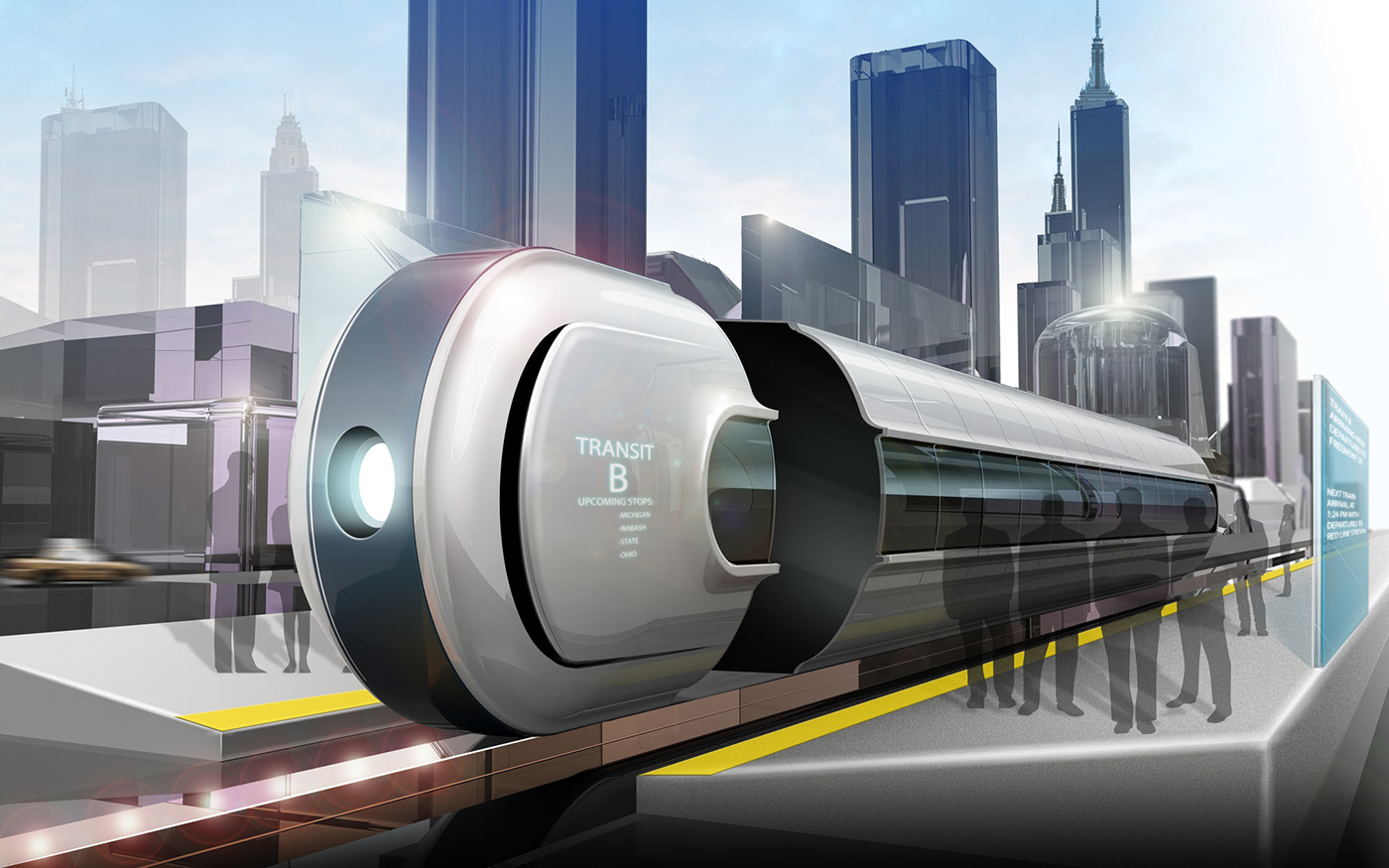Железнодорожный транспорт будущего.
Бурный рост инновационных технологий в последние десятилетия не обошел стороной и железнодорожный транспорт. Благодаря им современные поезда стали более скоростными, надежными и более эффективными в выполнении своего прямого назначения – перевозок. Быстрая доставка грузов и пассажиров в пункты назначения сочетаются с экологической чистотой современных поездов.
Все эти преимущества заставляют с оптимизмом глядеть в будущее этого вида транспорта. Мало того, появляются новые технологии и технические приспособления, которые это будущее приближают. Вот несколько технологических новинок, за которыми будущее развития железнодорожного транспорта.

1. Солнечные рельсы
Использование солнечных батарей уже перешло с чисто бытового применения для обогрева жилья в транспортную сферу. Первыми их стали применять автомобильные компании, производящие электромобили, которые закрепляют солнечные панели на крышах машин.
В 2017 году австралийцы пошли по тому же пути, разместив аккумуляторы солнечной энергии на поезде. Такой состав уже курсирует в австралийском Байрон-Бее.
Нетрудно представить, что в скором времени использование солнечной энергии на железнодорожном транспорте приобретет широкое применение. Но есть и еще альтернативные источники, которые можно использовать в качестве движущей энергии, например, водородная энергетика.
2. Водородные поезда
Сам принцип получения энергии при расщеплении водорода не нов, но до настоящей поры не было технологически отработанного механизма этого процесса. Пара из анода, катода и электролитической мембраны составляют топливный элемент, который и расщепляет водород на электрон и протоны. Походя через цепь, электроны генерируют электроэнергию, которая либо аккумулируется в литиевых батареях, либо напрямую идет в электродвигатель.
Единственным недостатком такой технологии считается то, что происходит реакция водорода с кислородом, в результате чего образуется вода. Но над устранением этого недостатка ведутся работы.
Технология уже применена в Германии, где появился первый пассажирский состав Coradia iLint, где топливом является водород. Этот поезд практически бесшумен, а выбросами от него являются только пар и вода.
3. Автономные рельсы
Технология автономных поездов применяется во многих странах мира уже не один год. Но продолжает рекламироваться как будущее железных дорог. Причина этому проста: сама система постоянно прогрессирует в техническом плане и применяется на все более протяженных маршрутах, а кроме этого постоянно оптимизируется автоматизация перевозок. В настоящее время эти технологии с успехом применяются в метрополитене и других видах общественного транспорта, когда разрабатывается оптимальный график движения с учетом пиковых нагрузок.
4. Сверхбыстрые поезда Маглева
Самый быстрый поезд в мире – это Маглев (magnetic levitation) в Шанхае, который работает на принципе магнитной подушки. Расстояние в 12 км он преодолевает за 7 минут, развивая скорость более 166 км/час. К 2027 году планируется открыть новую линию в Японии Chuo Shinkansen между Токио и Нагойей, где состав должен развивать скорость до 195 км/час, а весь путь будет занимать всего 40 минут.
5. Интеллектуальные датчики для автоматической проверки путей
Но не только сами поезда постоянно совершенствуются. Гигантский объем информации, который связан с железнодорожными перевозками, требует внедрения новых систем обработки этого информационного потока.
Компаниями Siemens и Thales, начата разработка и внедрение датчиков, которые напрямую связаны с обеспечением безопасности движения на железных дорогах. Эти датчики должны подавать в реальном времени данные, например, о разрывах железнодорожного полотна с помощью системы GPS-позиционирования.
6. Дроны - дополнительная мера по обеспечению безопасных пассажирских перевозок
Такие беспилотные устройства предполагается использовать для улучшения безопасности перевозок. Используя автоматизированные системы зондирования, эти аппараты могут применяться для проверки путей перед движущимся составом, определяя возможные преграды на пути следования и контролировать движение поезда в автономном режиме.
7. Startram: поезд в ... космос?
Эта идея пока довольно отдаленного будущего, хотя сама перспектива совмещения железнодорожных и космических технологий не выглядит чем-то фантастическим и ее разработка началась еще в 2001 году.
Разрабатываемая концепция Startram (космический трамвай) предполагает выведение космических кораблей на околоземную орбиту с использованием принципа рельса Маглева, что должно избавить космическую отрасль от проблем с топливом и существенно снизить затраты вывода грузов на орбиту.
Это показательный пример того, как уже применяемые на железнодорожном транспорте технологии пытаются использовать в других отраслях человеческой деятельности.
8. Использование космической техники
Но и обратное проникновение технологий вполне реально. Так, по заявлению Европейского космического агентства, применяемая при возвращении космического корабля на Землю сенсорная технология безопасности, может с успехом применяться и на железнодорожном транспорте.
Кроме этого, использование спутниковых технологий позволит обеспечить стабильное подключение к Интернету в высокоскоростных поездах.
9. Гибридный поезд-самолет
Главная проблема современного воздушного транспорта в том, что к 2030 году при имеющихся темпах роста воздушных перевозок, мировая система аэропортов окажется критически перегруженной. Поэтому уже сейчас AKKA Technologies приступила к разработке проекта мультимодального самолета с названием «Link & Fly».
Этот гибрид самолета и поезда не привязан полностью к аэропорту, а загрузка вагона-капсулы может происходить в любом доступном для железнодорожного транспорта месте. Капсулы могут быть пассажирскими и грузовыми. Первые варианты этого проекта уже начали проходить реализацию, а компания Boeing и ряд азиатских инвесторов готовы вложить в проект средства.
Модульная система будущего транспорта даст толчок к дальнейшему технологическому прогрессу железнодорожной отрасли, которая становится все более экологически безопасной и привлекательной для пассажиров.








